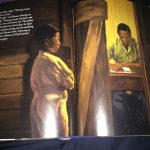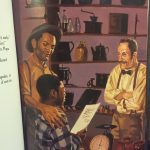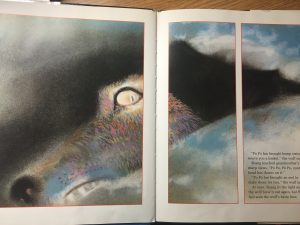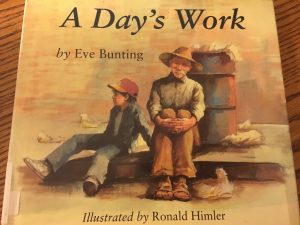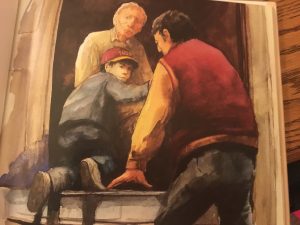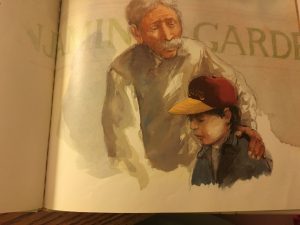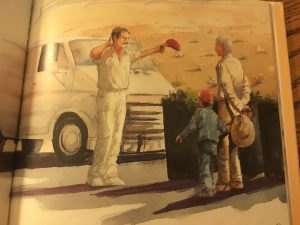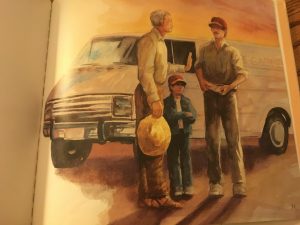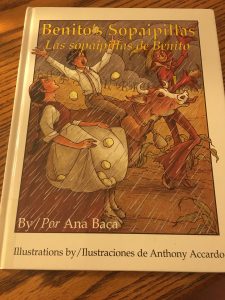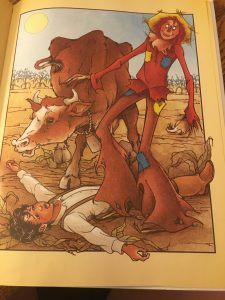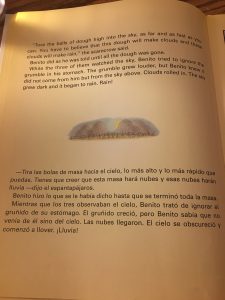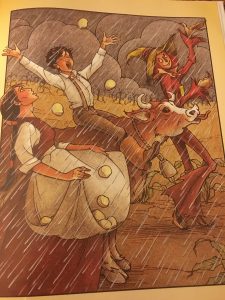
Author: Eve Bunting
Illustrator: David Diaz
Publishing Information: Voyager Books, 1994
Number of Pages: 28
Genre: Historical Fiction
Analysis:

Smoky Night is the Caldecott Award-winning book that tells the story of a young boy and his mother witnessing the rioting in the streets below their apartment building. When a fire breaks out they must flee for safety all while taking in the wreckage the rioters have caused in their neighborhood. They find safety in a shelter, and the incident unifies the people of the neighborhood.
The book was published in 1994, which led me to wonder if there was a particular incident that could have inspired the story. Sure enough, the story was inspired by the rioting that took place in 1992 after an incident of alleged police brutality against Mr. Rodney King. I think this book does an exceptional job of providing children with a window to look at this piece of history, as it gives the perspective of a child living through that chaos without being too detailed or frightening for young readers. The story mainly focuses on the child’s search for his cat, who gets lost in the midst of tenants fleeing from the apartment, which can be both problematic and useful. I can see where readers may find this problematic as it shifts focus away from the riots and focuses more on the lost cat. However, this can be useful as it makes the story more accessible to a younger audience.
The illustrations of the book were certainly eye-catching and very additive to the text. The background of each page featured real-life objects (such as hangers, plastic bags, and wooden signs) that conveyed the point that this story is based off of real-world happenings. Furthermore, the illustrations are done in dark paint and are always featured on the right-hand page which demonstrates the mood of chaos and dreariness that surrounds the events in the story. The illustrations are framed with thick, black paint, so readers are looking in on this story from afar. In addition, although the text is always featured on the left-hand page, it is written on a crumpled paper which further demonstrates the mess of the situation playing out in the story.
This book provides children with an accessible window to examine a real-life event through the eyes of a child living through it. Furthermore, they are taught the value of coming together in a tough time, as the neighbors in the story demonstrate.


 In March: Book One John Lewis tells about the struggle he has gone through and witnessed since the beginning days of segregation. He highlights the highs and lows of the Civil Rights Movement, and how much influence he had in the process.
In March: Book One John Lewis tells about the struggle he has gone through and witnessed since the beginning days of segregation. He highlights the highs and lows of the Civil Rights Movement, and how much influence he had in the process.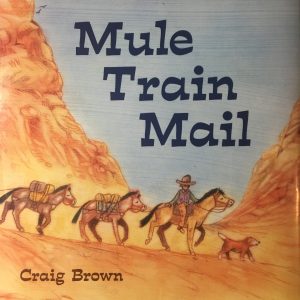
 The images, created by the author, begin with a map tracking the map the mule train follows. As Anthony starts his descent to the Supai village, the images turn long-wise, emphasizing the downward descent of the mountain. The images display the different types of weather that the mules face such as snow and ice or very hot. The illustrations accurately depict the terrain in the Grand Canyon. As they reach the bottom of the mountain, the images turn back to horizontal. The double spread page allows the reader to engage themselves in the journey alongside Anthony. The book is told in a narrative manner, as if the author is retelling the story of his journey to a friend. Since this book tells a true story, it introduces children to a different culture. Students who read this book will be introduced to a different type of public service. In addition, it raises awareness about a culture that does not receive a lot of recognition. This book can also be used to show the dedication and determination that Anthony has for his job. The mail gets carried through very dangerous weather that could harm both Anthony and the mules.
The images, created by the author, begin with a map tracking the map the mule train follows. As Anthony starts his descent to the Supai village, the images turn long-wise, emphasizing the downward descent of the mountain. The images display the different types of weather that the mules face such as snow and ice or very hot. The illustrations accurately depict the terrain in the Grand Canyon. As they reach the bottom of the mountain, the images turn back to horizontal. The double spread page allows the reader to engage themselves in the journey alongside Anthony. The book is told in a narrative manner, as if the author is retelling the story of his journey to a friend. Since this book tells a true story, it introduces children to a different culture. Students who read this book will be introduced to a different type of public service. In addition, it raises awareness about a culture that does not receive a lot of recognition. This book can also be used to show the dedication and determination that Anthony has for his job. The mail gets carried through very dangerous weather that could harm both Anthony and the mules.![2016-05-16_16.24.01[1]](https://blogs.iwu.edu/lrbmt2016/files/2016/05/2016-05-16_16.24.011-300x300.jpg)
![2016-05-16_16.24.51[1]](https://blogs.iwu.edu/lrbmt2016/files/2016/05/2016-05-16_16.24.511-300x152.jpg)
![2016-05-16_16.27.04[1]](https://blogs.iwu.edu/lrbmt2016/files/2016/05/2016-05-16_16.27.041-241x300.jpg)
![2016-05-27_11.03.56[1]](https://blogs.iwu.edu/lrbmt2016/files/2016/05/2016-05-27_11.03.561-300x198.jpg)
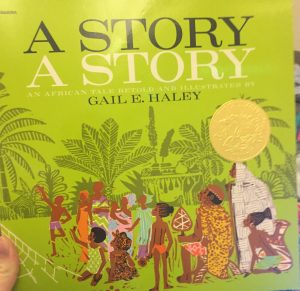 Author(s): Gail E. Haley
Author(s): Gail E. Haley

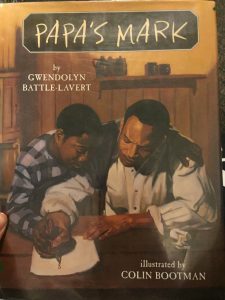 Author(s): Gwendolyn Battle-Lavert
Author(s): Gwendolyn Battle-Lavert